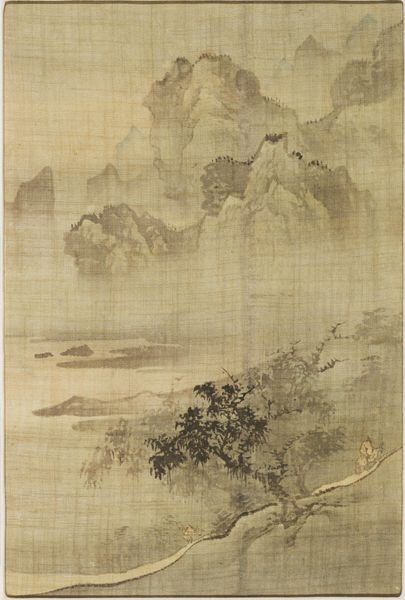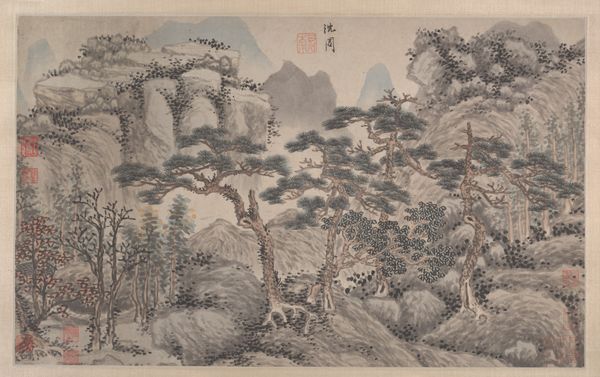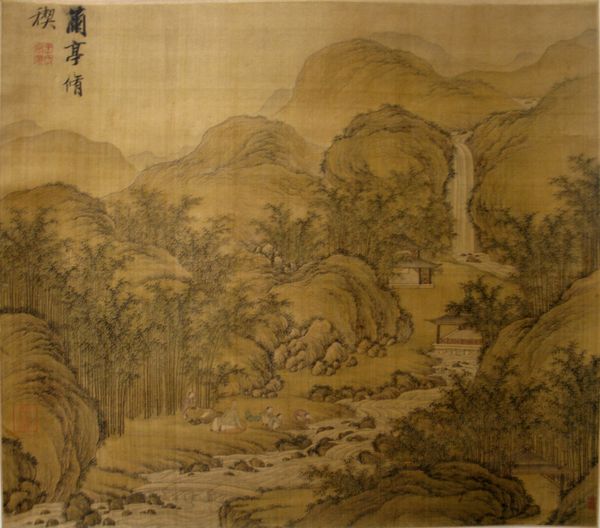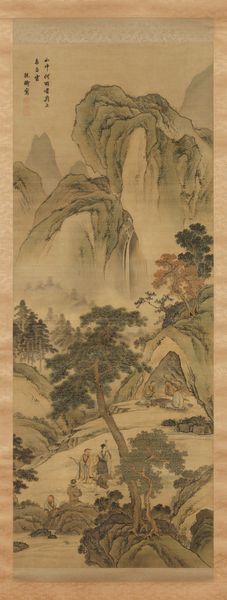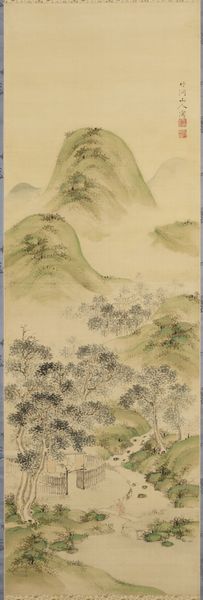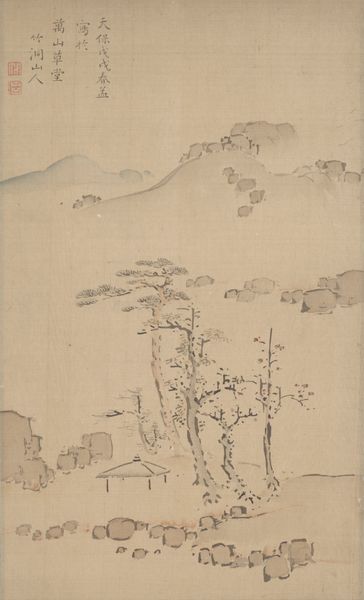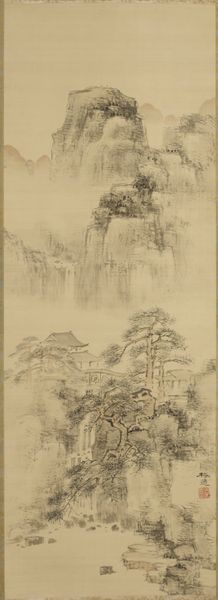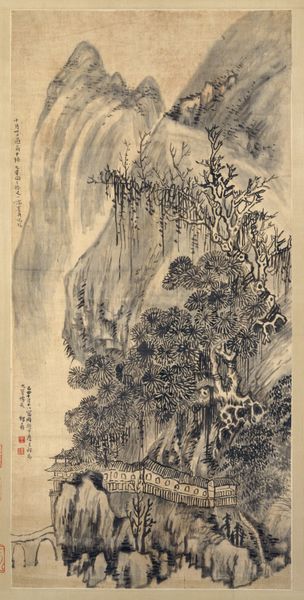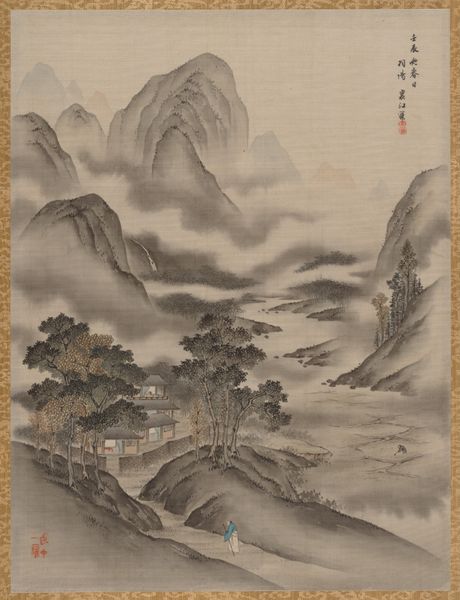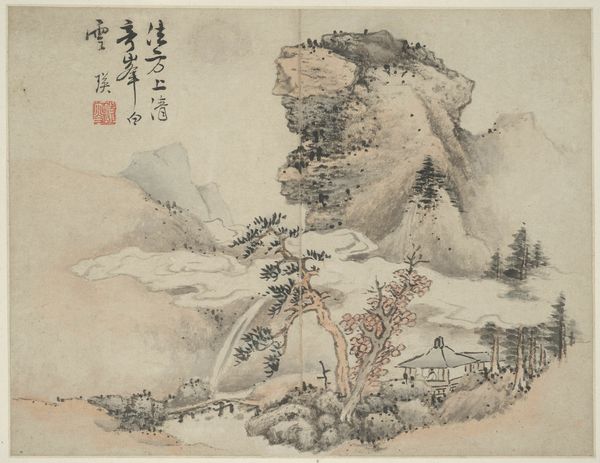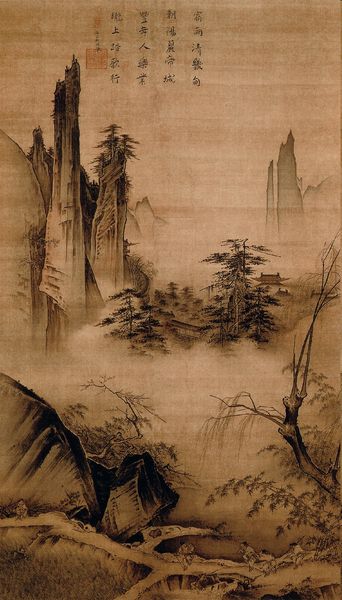
Chinese Scholars in Mountain Landscape c. mid 19th century
0:00
0:00
painting, paper, watercolor, hanging-scroll
#
water colours
#
narrative-art
#
painting
#
asian-art
#
landscape
#
figuration
#
paper
#
watercolor
#
hanging-scroll
#
coloured pencil
#
mixed medium
#
watercolor
Dimensions: 10 3/16 × 8 3/8 in. (25.88 × 21.27 cm) (image)38 7/16 × 13 1/2 in. (97.63 × 34.29 cm) (mount, without roller)
Copyright: Public Domain
Curator: Welcome. We're looking at "Chinese Scholars in Mountain Landscape," a watercolor on paper hanging scroll created around the mid-19th century. It's attributed to Suzuki Gako. Editor: It strikes me as so serene, almost meditative. The misty quality and the muted tones create a real sense of quiet contemplation. The small figures are dwarfed by the grandeur of the landscape. Curator: Precisely. Scholar-artists often depicted idealized natural settings like this. These paintings served not just as landscapes, but as moral allegories, reflections on their social position and place in the hierarchy. This work evokes a sense of traditional, historical authority for these scholars. Editor: I’m immediately drawn to think about who has access to that contemplation, that sense of peace? Whose stories are represented and whose are actively omitted in this representation of “serenity”? And the lack of women's representation within scholarly historical settings... It speaks volumes, doesn’t it? Curator: Absolutely, you bring up a valid point. This type of imagery historically reinforced the power structures within scholarly and bureaucratic circles, solidifying certain voices. What we see, and who is highlighted, definitely matters. It does shape our view of history, tradition and those holding authority positions. Editor: Thinking about its materiality too… watercolor on a hanging scroll also places limitations to access and creates specific conditions for viewership that shape our experience, right? Not easily reproduced or viewed casually. The materials and format become intrinsic to its historical impact. Curator: Yes, these scrolls were typically viewed in private, fostering an intimate relationship with the art. This adds to that sense of exclusivity of knowledge and understanding. Its role extended beyond pure aesthetics, functioning as status symbol and embodiment of scholarly virtues. Editor: So, on the one hand we’re given this visual of meditative calm, a return to nature and focus, but on the other, that experience of tranquility comes from and reinforces structures of privilege. The landscape is beautiful, but its narrative isn't quite so simple. Curator: It makes you think about who truly could retreat into those mountains for contemplation and who did not have the ability. Editor: Right. This artwork, in its own quiet way, has sparked such a crucial point for reflection: what truly makes for peace and serenity when so many are systematically excluded from its embrace?
Comments
No comments
Be the first to comment and join the conversation on the ultimate creative platform.
